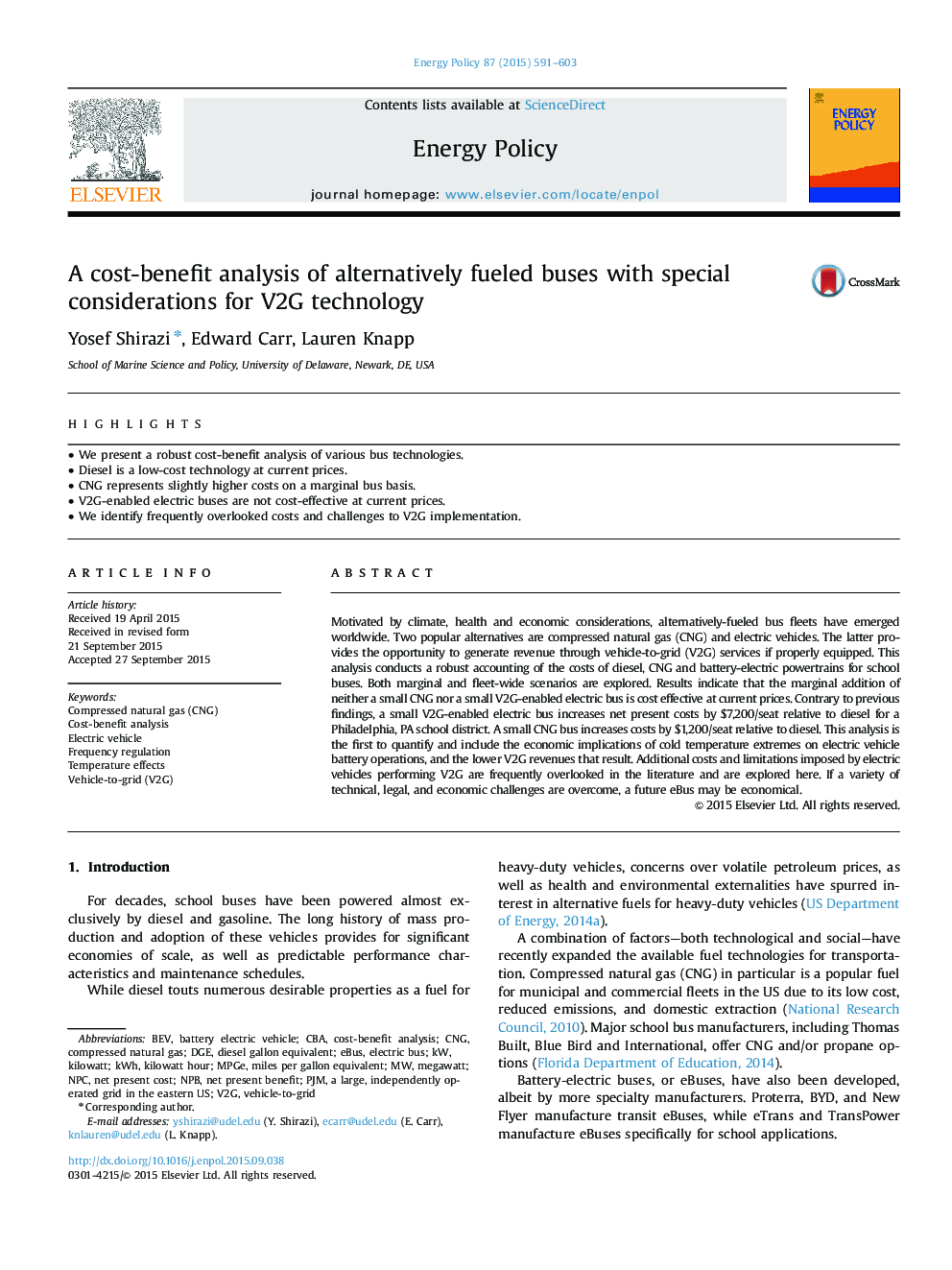| Article ID | Journal | Published Year | Pages | File Type |
|---|---|---|---|---|
| 7400180 | Energy Policy | 2015 | 13 Pages |
Abstract
Motivated by climate, health and economic considerations, alternatively-fueled bus fleets have emerged worldwide. Two popular alternatives are compressed natural gas (CNG) and electric vehicles. The latter provides the opportunity to generate revenue through vehicle-to-grid (V2G) services if properly equipped. This analysis conducts a robust accounting of the costs of diesel, CNG and battery-electric powertrains for school buses. Both marginal and fleet-wide scenarios are explored. Results indicate that the marginal addition of neither a small CNG nor a small V2G-enabled electric bus is cost effective at current prices. Contrary to previous findings, a small V2G-enabled electric bus increases net present costs by $7,200/seat relative to diesel for a Philadelphia, PA school district. A small CNG bus increases costs by $1,200/seat relative to diesel. This analysis is the first to quantify and include the economic implications of cold temperature extremes on electric vehicle battery operations, and the lower V2G revenues that result. Additional costs and limitations imposed by electric vehicles performing V2G are frequently overlooked in the literature and are explored here. If a variety of technical, legal, and economic challenges are overcome, a future eBus may be economical.
Keywords
Related Topics
Physical Sciences and Engineering
Energy
Energy Engineering and Power Technology
Authors
Yosef Shirazi, Edward Carr, Lauren Knapp,
